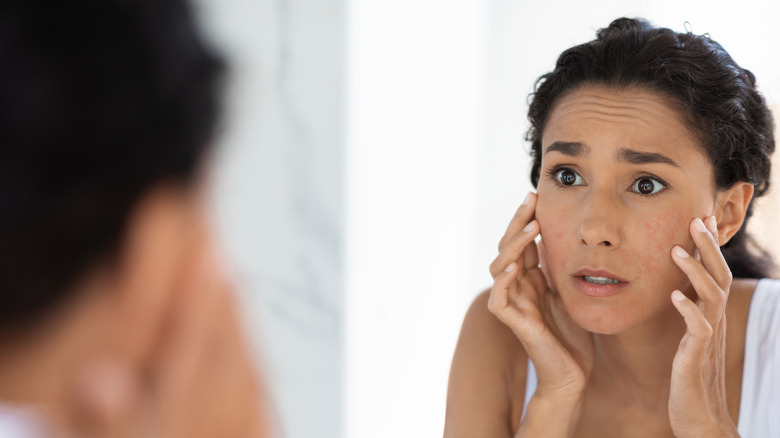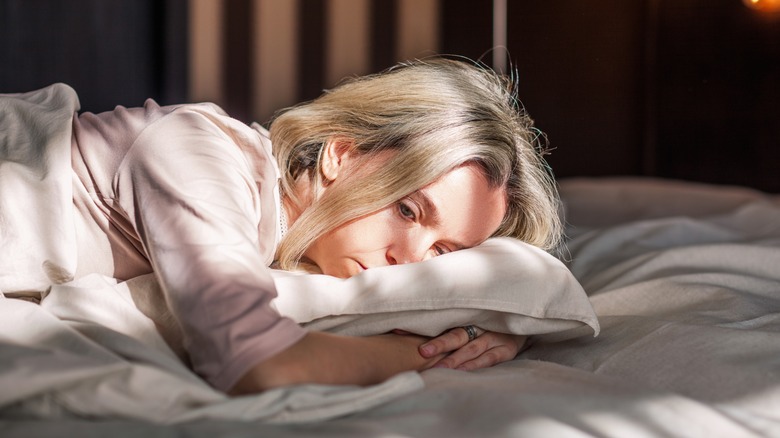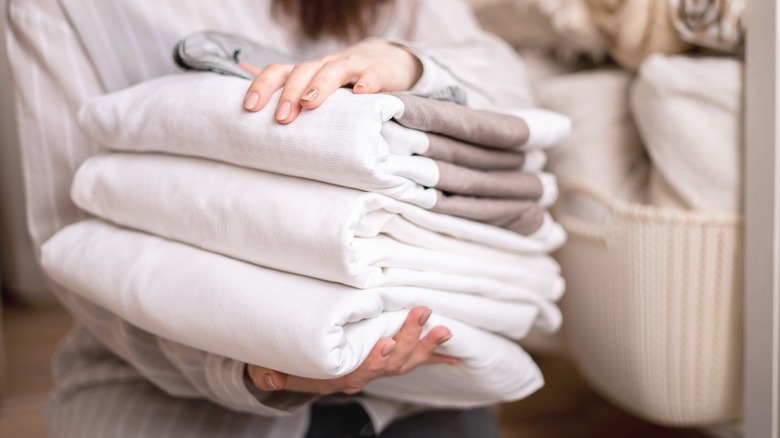Could Bedding Be Behind Your Breakouts?
From trying home remedies that reduce the size of pimples to searching for products that treat stubborn acne scars, dealing with breakouts and their aftermath can feel daunting. The same feeling applies to trying to pinpoint the cause of your breakouts. Sometimes they're due to hormonal changes, but other times it can seem as if they enjoy randomly appearing on your face. We can promise that scrubbing too hard while washing your face won't help rid you of any acne, but we can share what may be the root cause of them — your bedding.
Although they're meant to comfort you and keep you warm, there's a possibility that the pillow case and comforter you snuggle with at night are the culprits behind sudden acne even after you've followed your nighttime skincare regimen. We know that having a skincare routine is crucial to the health of your skin, but, as we've learned, so is factoring in the condition of your bedding.
How bedding can cause breakouts
Bacteria can form on just about any surface you can think of, including your bedding. According to an interview with InStyle, Lian Mack, a board-certified dermatologist, said, "Over the course of a few days, dead skin cells, oil, and bacteria can build up on the pillow's surface. These three components may lead to acne breakouts." Beyond that, if you have nights where you forget to remove your makeup and fall asleep while wearing it, the residue can seep into your pillowcases. When you put that together, it creates an environment that gives bacteria the room to grow and spread, unfortunately, to your face.
If you've ruled out other factors that could be causing your breakouts and believe your bedding is the culprit, it's likely that you have acne mechanica. In an interview with First Derm, The Center for Dermatology, Cosmetic & Laser Surgery's founder, Dr. David E. Bank, said, "Acne mechanica is any type of acne that is the result of material objects touching your face."
What you can do to reduce breakouts
Changing your bedding is the key to reducing bacteria buildup that can lead to acne. It's recommended that you aim to change your sheets frequently to avoid this. In an interview with Self, medical director of the Dermatology Faculty Practice at the Icahn School of Medicine at Mount Sinai, Gary Goldenberg, said, "Making sure your skin is in [a] clean environment can definitely make a difference." The thought of increasing how often you wash your bedding sounds mundane and tiring, but your skin will thank you for it.
You can also think about changing the fabric of your pillowcases since your face spends the majority of the night touching them. Marisa Garshick, MD, FAAD, told InStyle, "While silk pillowcases are often considered for their possible benefits for hair and wrinkles, they don't absorb as much moisture as cotton, making them a good option for those with sensitive skin." Another alternative is to look for hypoallergenic bedding because the fabric is woven in a way that makes it less desirable for bacteria to attach to.


